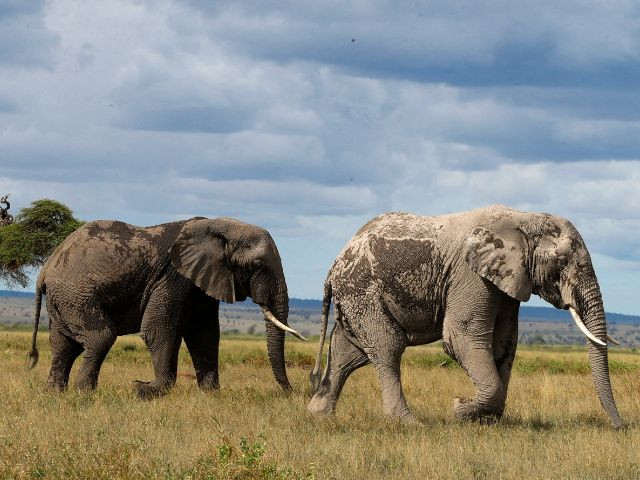
African elephants, some of the largest and most iconic creatures on Earth, have suffered a devastating decline over the past five decades, according to a study published in Proceedings of the National Academy of Sciences.
The study reveals a staggering 77% decline in elephant populations across the continent.
The research, which analysed population survey data from 475 sites across 37 African countries, highlights the toll that habitat loss, poaching, and human encroachment have had on these magnificent creatures.
The findings underscored the severity of the problem, but also offer glimmers of hope from areas where conservation efforts have been effective.
77% population decline
The study spans a period of 53 years, from 1964 to 2016, and represents the most comprehensive assessment of African elephant populations ever undertaken.
The researchers found that forest elephant populations have decreased by an astonishing 90%, while savanna elephant populations have fallen by an average of 70%. Taken together, the continent-wide decline amounts to an alarming 77% drop in elephant numbers.
"These are enormous declines, and they show just how vulnerable these iconic animals are to human activities," said George Wittemyer, the study’s senior author and a professor at Colorado State University. "This paper really shows the scale of the decline and how widespread it is across Africa."
Elephants are now facing a range of threats. The illegal ivory trade, human-wildlife conflict, and the ongoing destruction of their habitats have all played a significant role in the dramatic fall in population numbers. The study also highlights the challenges of accurately counting elephant populations due to the vast, remote nature of Africa’s landscapes. For example, savanna elephants are often counted from airplanes, while forest elephants require on-the-ground counting methods, which are both time-consuming and resource-intensive.
Conservation success stories
Despite the grim overall picture, the study also reveals some hopeful signs. While many elephant populations have disappeared, others have remained stable or even increased in certain protected regions, suggesting that targeted conservation efforts can still make a difference.
In southern Africa, particularly in Botswana, elephant populations are thriving due to successful conservation practices and effective management. The study cites Botswana as a prime example, where elephants have been well-protected, and sustainable management practices have led to a 42% increase in elephant numbers in some areas.
"Some areas show that, when well-managed and protected, elephant populations can recover and even thrive," said Wittemyer. "For example, the KAZA landscape in Southern Africa and the Katavi-Rukwa and Ruaha-Rungwa ecosystems in Tanzania have shown positive results."
In central and eastern Africa, however, populations have struggled, with some areas suffering near-total extinction of elephants. The Sahel region, in particular, has seen significant losses, exacerbated by ongoing conflicts that have disrupted wildlife conservation efforts. Similarly, in parts of central Africa, elephant numbers have been severely impacted by poaching for ivory and habitat destruction driven by human expansion.
Innovative approaches to elephant monitoring
One of the study’s notable contributions is its approach to monitoring elephant populations. Rather than simply counting individual elephants, researchers focused on measuring elephant density in various habitats across the continent. This method accounts for the varying survey practices across different regions and allows for a more accurate picture of population trends.
The researchers used data from areas with consistent survey information to infer population changes in regions where data was scarce. "Understanding how and where trends differ across the range of a species is crucial for effective conservation," said co-author Charles Edwards, a research scientist with CEscape consultancy services. "Even if data is limited, we can still infer population trends that are meaningful for conservation."
However, the study also points to the complexity of tracking elephant numbers in Africa, a continent more than three times the size of the United States. Challenges include inconsistent wildlife management policies across countries, the vast distances that must be covered, and the varying effectiveness of local wildlife management practices. In some regions, regular surveys are conducted, while in others, data collection is far more sporadic.
The future of elephant conservation
The findings of this study underscore the urgent need for continued and expanded conservation efforts to protect Africa's elephants. While the declines in population are deeply concerning, the research also provides valuable insights into what is working in terms of elephant conservation. It highlights the importance of protecting key habitats and working closely with local communities to ensure that both elephants and people can coexist.
"While the overall trend is worrying, there are certainly places where elephants are thriving," Wittemyer said. "This gives us hope and shows that with the right policies and management in place, we can still make a difference."
The research also highlights that effective conservation requires flexibility and context-specific solutions. Not every approach works in every region, but with careful management, there is still potential for stabilising and even increasing elephant populations in certain areas.






1732177276-0/Copy-of-Untitled-(62)1732177276-0-270x192.webp)
1732177123-0/BeFunk_§_]__-(21)1732177123-0.jpg)
1732179136-0/Copy-of-Untitled-(63)1732179136-0-270x192.webp)

1732172224-0/Express-Tribune-(1)1732172224-0-270x192.webp)
1731310099-0/Untitled-design-(2)1731310099-0-270x192.webp)
1729059744-0/Untitled-design-(10)1729059744-0-270x192.webp)








COMMENTS
Comments are moderated and generally will be posted if they are on-topic and not abusive.
For more information, please see our Comments FAQ